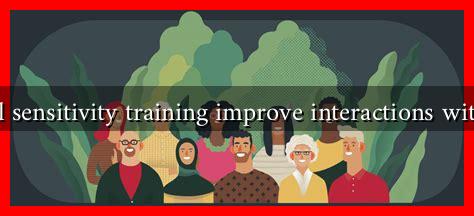-
Table of Contents
- How Can Cultural Sensitivity Training Improve Interactions with Veiled Women?
- The Importance of Cultural Sensitivity
- Understanding the Veil: A Cultural Perspective
- Case Studies: Successful Implementation of Cultural Sensitivity Training
- Statistics Highlighting the Need for Cultural Sensitivity
- Conclusion: The Path Forward
How Can Cultural Sensitivity Training Improve Interactions with Veiled Women?
In an increasingly globalized world, understanding and respecting cultural differences is paramount. One area where cultural sensitivity is particularly crucial is in interactions with veiled women, who may wear the hijab, niqab, or burqa for various reasons, including religious beliefs, cultural identity, or personal choice. This article explores how cultural sensitivity training can enhance these interactions, fostering respect, understanding, and effective communication.
The Importance of Cultural Sensitivity
Cultural sensitivity refers to the awareness and understanding of cultural differences and the ability to interact respectfully with individuals from diverse backgrounds. In the context of veiled women, cultural sensitivity training can help break down stereotypes and misconceptions, leading to more positive interactions. Here are some key reasons why this training is essential:
- Promotes Respect: Understanding the significance of veiling can foster respect for individual choices and beliefs.
- Reduces Prejudice: Training can help dispel myths and stereotypes associated with veiled women, reducing bias and discrimination.
- Enhances Communication: Cultural sensitivity equips individuals with the skills to communicate effectively and respectfully with veiled women.
Understanding the Veil: A Cultural Perspective
The veil is often misunderstood in Western societies, where it may be seen as a symbol of oppression. However, for many women, wearing a veil is a personal choice that reflects their identity and beliefs. Cultural sensitivity training can provide insights into the diverse reasons women choose to wear veils, including:
- Religious Beliefs: For many Muslim women, wearing a hijab is an expression of their faith and commitment to their religious values.
- Cultural Identity: In some cultures, veiling is a traditional practice that signifies cultural heritage and identity.
- Personal Empowerment: Some women view the veil as a means of empowerment, allowing them to define their identity on their own terms.
Case Studies: Successful Implementation of Cultural Sensitivity Training
Several organizations and institutions have successfully implemented cultural sensitivity training programs that focus on interactions with veiled women. Here are a few notable examples:
- Workplace Training: Companies like Deloitte have introduced cultural sensitivity training that includes modules on understanding diverse religious practices, including veiling. This has led to improved workplace dynamics and inclusivity.
- Educational Institutions: Schools that have implemented cultural sensitivity training have reported a decrease in bullying and discrimination against veiled students, fostering a more inclusive environment.
- Healthcare Settings: Hospitals that provide cultural sensitivity training for staff have seen improved patient satisfaction among veiled women, as healthcare providers become more aware of cultural nuances and respectful in their interactions.
Statistics Highlighting the Need for Cultural Sensitivity
Statistics underscore the importance of cultural sensitivity training in improving interactions with veiled women:
- According to a study by the Pew Research Center, 62% of Muslim women in the U.S. reported experiencing discrimination due to their religious attire.
- A survey conducted by the Institute for Social Policy and Understanding found that 48% of Muslim women felt uncomfortable in public spaces due to their veiling.
- Research indicates that workplaces with diversity training see a 30% increase in employee satisfaction and retention rates.
Conclusion: The Path Forward
Cultural sensitivity training is not just a tool for improving interactions with veiled women; it is a vital component of fostering a more inclusive and respectful society. By understanding the cultural significance of veiling, reducing prejudice, and enhancing communication skills, individuals can create a more welcoming environment for everyone. As we move forward in an increasingly diverse world, investing in cultural sensitivity training will be essential for building bridges of understanding and respect.
For more information on cultural sensitivity training, you can visit Cultural Competence.

